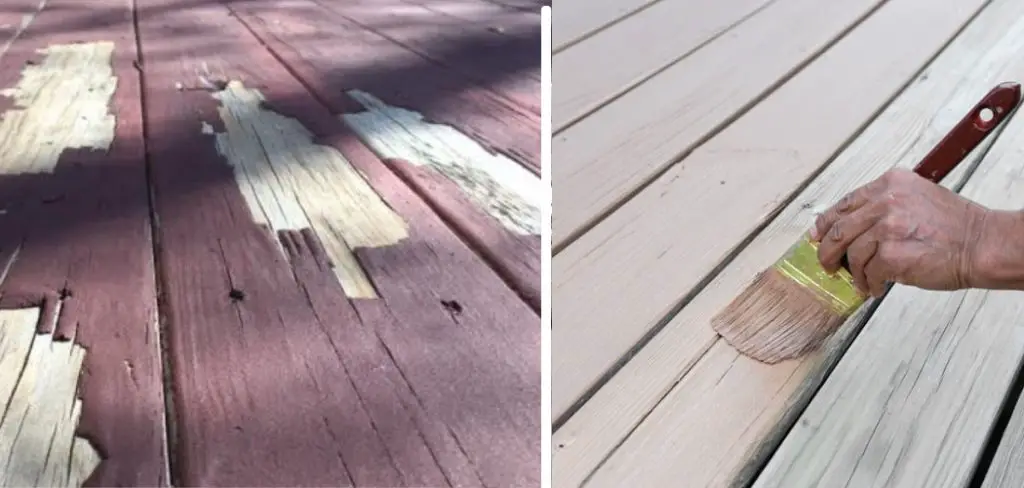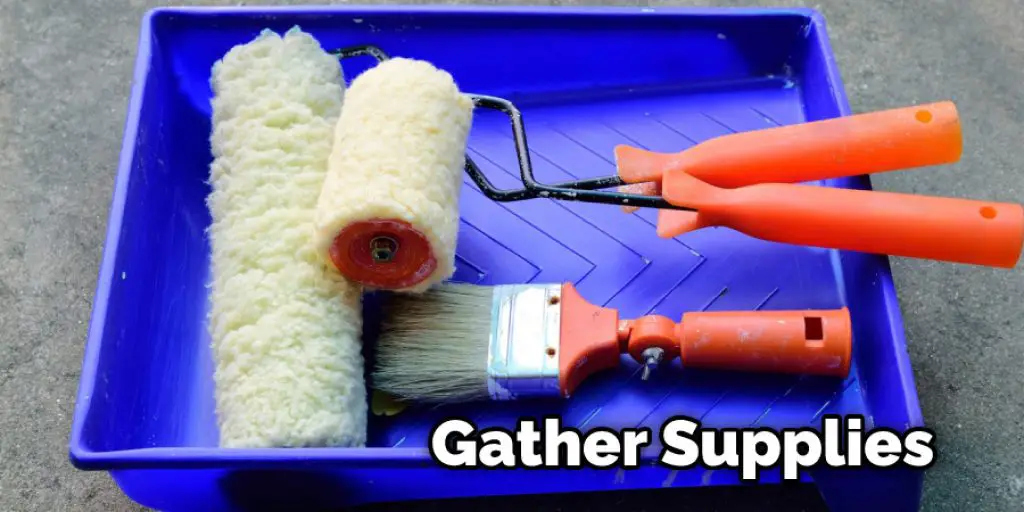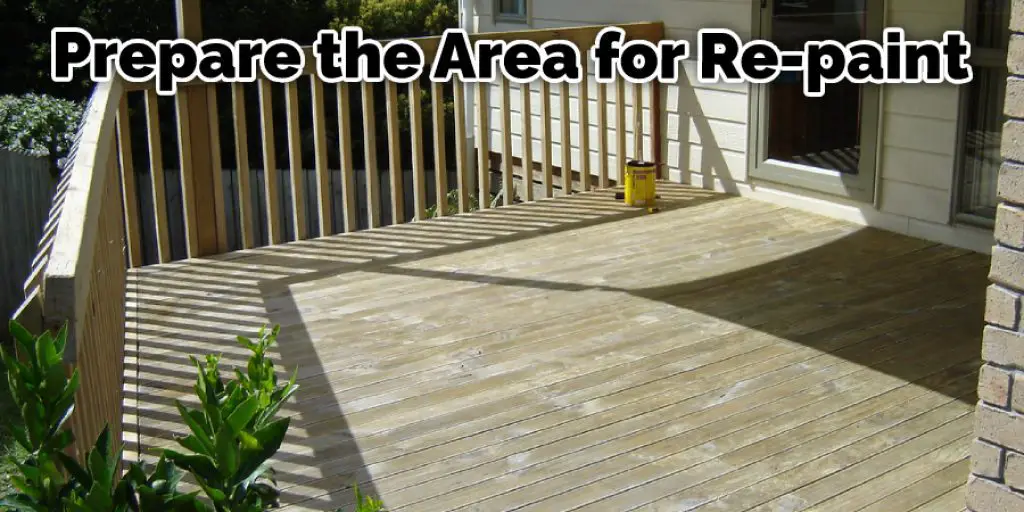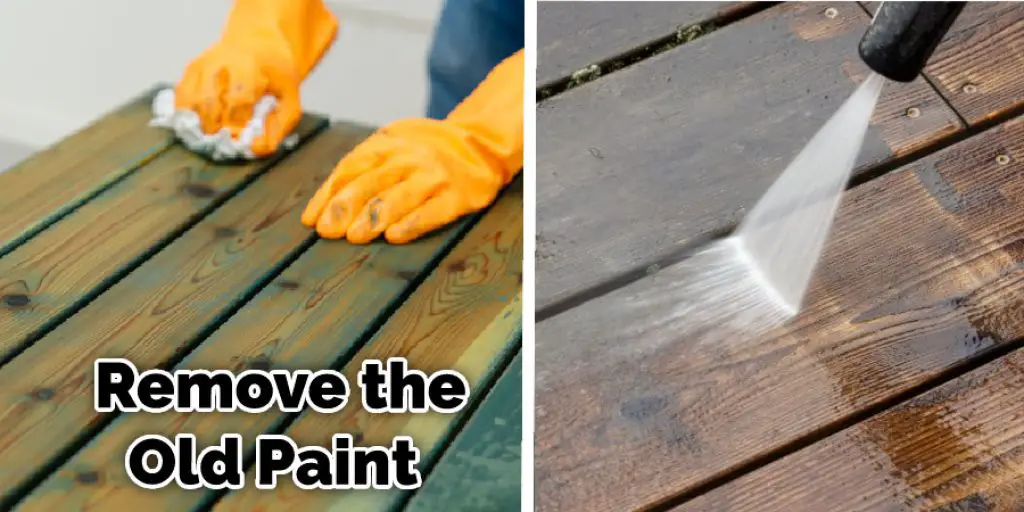There are many reasons why a deck can have peeling paint. It could be because of age, damage from the elements, or improper installation. Whatever the reason, it is essential to know how to properly prepare your surface before painting to avoid more problems than you started with!

For instance, if there is wood rot in any area of your deck, this will need to be addressed first before applying fresh paint for safety reasons. If you are unsure how best to address this problem, consult a professional for advice on what needs to be done beforehand.
After addressing any issues, make sure that all surfaces are clean and dry before priming and painting them to accept the new coat of paint better. This blog post will show you how to paint a deck with peeling paint.
Step to Follow on How to Paint a Deck With Peeling Paint
Step One: Gather Supplies
The supplies you’ll need for this project are minimal, but they play a critical role in the success of your repainting job. They are: Paint roller tray Liner Brush Gloves Bucket Stirring stick Latex or acrylic paint that is the same color as the old coat.

If you are working with an opaque surface rather than a translucent one like we are, make sure you get paint designed for your project. For example, if you are going to be painting a wall, you’ll need paint that has enough body and opacity, meaning the color will cover up what’s underneath it to cover the other coat of paint.
Step Two: Prepare the Area
Image Caption: Preparing the area will make you go faster and more efficiently. In this article, I am referring to a personal deck, but the same concept would apply if this were a large-scale industrial job of painting a building or bridge.

If you are renovating an industrial site by repainting it, be sure to have everything up and out of the way before you start painting, then move it back into place once the paint has had time to dry. However, if you are renovating a home, make sure the area is clean and free of clutter before you start.
Step Three: Remove the Old Paint
Image Caption: Be sure not to remove too much paint at one time, or you might end up with an unsightly wood surface. Remove only the loose parts of peeling paint using a stiff bristle brush or sandpaper. You are trying to keep as much old latex paint on the surface as possible, so be sure not to sand too hard.

At this point, you will want to remove all of the loose peeling paint by either brushing it away or sanding it off gently. If you choose to brush it away, be sure not to apply so much pressure that you scrape the surface even more than it already is.
Step Four: Paint the First Coat
Image Caption: Use a broad paintbrush to apply the first coat of latex or acrylic paint. You can buy these at any home improvement store. Use a broad paintbrush that is designed for painting surfaces like decks and fences, etc. This will give you better control and more uniform results than using a roller which can leave ridges in the paint.
For best results, apply two coats of latex or acrylic paint. The second coat should be applied when the first is tacky to the touch but not dry. Wait about 20 minutes between coats for the best results. After removing all of the peeling paint, it’s time to apply the first coat of paint.
Step Five: Curing and Cleaning
After 30 minutes, the paint should be dry enough to walk on. Depending on the humidity levels where you live, this may take longer. If you are painting a deck or porch that will be walked on as soon as it is finished, you’ll need to wait at least 30 minutes before doing so.
After the first coat dries, you will need to mix up a small amount of paint and use it to touch up any spots that might have been missed. This includes areas where the old paint was very thick or in a high-moisture area like near a potted plant. If you are painting over an opaque surface such as a deck, the paint should be dry in about 30 minutes. These steps should help you in learning how to paint a deck with peeling paint.
Step Six: Maintaining Your Deck
Once you have finished painting your deck, you can do a few things to keep it looking nice for years to come—some of the best ways to take care of a deck include. First, add a fresh coat of paint before the old one begins peeling again. One trick for this is to put some water in a spray bottle and spray the deck once every few weeks.
This will provide moisture that can reduce peeling. Do not put any furniture or standing water on the deck for at least several hours after painting. Using furniture before it dries can leave unsightly marks, and using standing water, especially near wood rails, will increase the chance of mold growing underneath your paint.
Step Seven: Enjoy
A freshly painted deck will look great, and you’ll be able to enjoy your new outdoor space. And that’s it! Painting a deck may seem like a daunting task, but it doesn’t have to be that way. Once you do it once, you’ll see how easy it is!

Once the paint has dried, you’re all done! Be sure to take good care of your deck by adding a new coat as needed and avoiding placing standing water on the surface. Although painting a deck does require some work, it’s easy enough that with just one application, you’ll be able to enjoy an attractive new look for years to come.
Frequently Asked Questions
Do You Have to Remove Old Paint Before Repainting Deck?
You don’t have to remove old paint before repainting a deck. However, it is recommended that you do so if the old paint has been allowed to dry for a long time and the surface of the wood may be harder than new wood.
Why Is My Decking Paint Peeling Off?
The first thing that comes to mind is moisture. It is possible that the paint has not been dried properly before painting, and this may have caused the paint to peel off.
Can I Just Repaint My Deck?
Yes, you can repaint your deck if it is not structurally damaged. However, This Might Not Be the Best Option Because :
- You will have to find someone who has experience painting decks.
- It might cost more than expected to get a new paint job done since the deck may need repairs and changes before it can be painted.
Can You Sand Paint Off a Deck?
Yes, you can sand the paint off a deck. However, there are some things to consider before you do so.
First, be sure that the surface is clean and dry before sanding. This means that any dirt or other debris should be removed with a power washer first.
Next, make sure to use the appropriate type of sandpaper for the project at hand. If it’s plastic or wood, use fine-grit paper, while if it’s concrete, use medium-grit paper to avoid damage.
Finally, once you have finished sanding and cleaned up your mess using water and soap, seal the deck with an epoxy coating to prevent further moisture from reaching the wood below, which will cause more problems down the road like mold and mildew growths as well as premature aging of your deck.
What to Do With a Deck That Has Peeling Paint?
If you have a deck that is peeling paint, there are a few things that you can do to restore it. The first step is to identify the source of the damage. This may be due to weather conditions (such as high winds or thermal extremes), insects, or other animals. Once you determine the cause, take appropriate steps to mitigate it.
If the damage is due to weather conditions, then applying an insecticide will likely not work and may even harm wildlife. In this case, wind-blocking materials such as plastic sheeting or metal sheets may need to be installed in order for repairs to progress safely and without further damage occurring.
If the damage was caused by insects or animals, then treating them should resolve the issue relatively quickly unless they are nesting members of dangerous species which requires professional pest control services. If treatment fails after several attempts at using pesticides or traps/snare devices, then consulting a certified structural pest specialist could help get your deck back into good condition sooner rather than later!
Can I Paint Over Peeling Paint on Wood?
it depends on the type of paint and wood. If the paint is a sealant or architectural glue, then you may not be able to remove it with regular painting methods. In most cases, you will need to use a primer before any painting in order to ensure that the paint adheres properly. After completing your project, be sure to apply clear coats over all areas where color was applied in order to protect the finish.
Do You Have to Power Wash Deck Before Painting?
No, you don’t have to power wash your deck before painting. It’s generally not a good idea to power wash your deck before painting because it can damage the paint and deck finish. Instead, you should use a mild soap and water solution to clean the surface.
Conclusion
To paint a deck with peeling paint, you will need some supplies. You may also want to apply the first coat of primer before painting your deck to not peel after being painted for a few years.
If you have any questions or need help deciding what colors would work best for your house and outdoor space, contact us today! The conclusion paragraph is informative and provides information on how to paint a deck with peeling paint.
You may also like it: 10 Ways To Make Your Deck Stand Out








